The great archaeological sites offer more than mere photo opportunities – they are physical connections to strange and often mysterious bygone eras. The sites selected for this blog, scattered as they are across the globe, tell the stories of long-gone civilizations, their achievements, and the indelible marks they left on our world.
From colossal stone monuments to enigmatic statues and buried cities, each site possesses its own matchless allure.
Join us as we embark on a journey to explore 10 of our favorite archaeological sites in the world, uncovering their wonders. We hope this blog will provide you with plenty of inspiration for your own travels. Before you go, check out Far Horizons’ Calendar of Trips for 2023 and 2024.
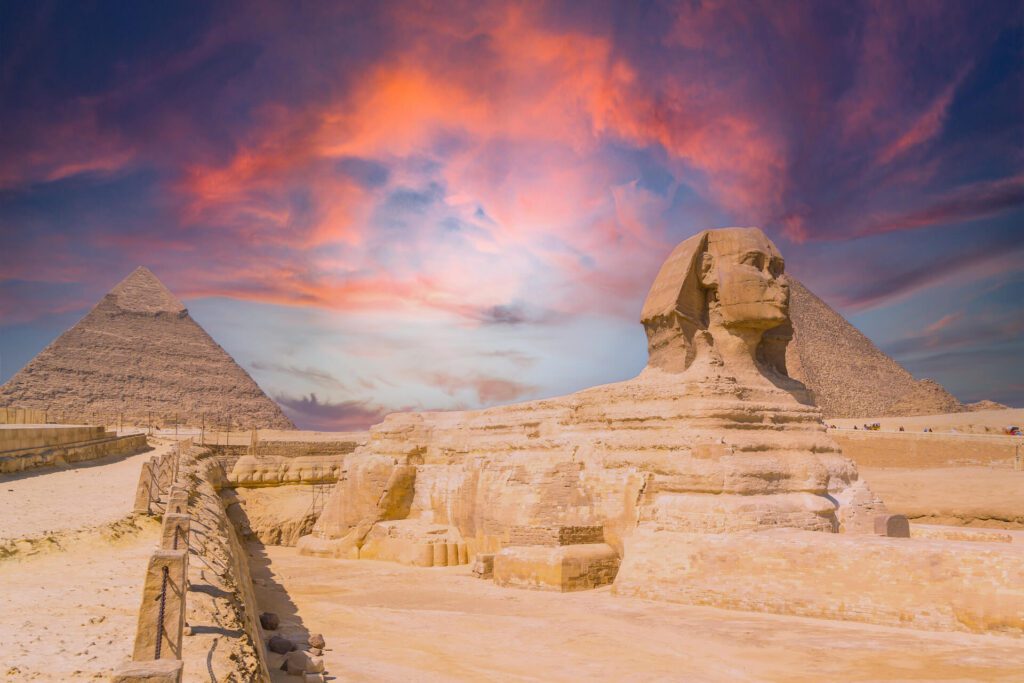
1. The Egyptian Pyramids
The Great Pyramid of Giza is often considered the crown jewel of the archaeological world, standing as the last surviving monument from the ancient list of the Seven Wonders of the World.
It’s no wonder that the Pyramids of Giza feature prominently on the bucket list of travelers from around the globe. These colossal structures not only stir one’s imagination but also provide a window into the powerful dynasty that built them — a dynasty whose construction methods continue to create debate between historians.
The expanse known as the Giza Complex encompasses the Giza Necropolis, the enigmatic Sphinx, the towering pyramids themselves, and the Valley Temple of Khafre. Nearly 5,000 years ago, Memphis was the thriving capital of Egypt, and Giza served as the sacred burial ground for the royal elite. The three pyramid complexes that dominate the landscape were constructed as monumental tributes to these kings.
One intriguing facet of the pyramids’ design is their orientation on the west side of the Nile River, where the sun sets. In the ancient Egyptian belief system, this choice held profound symbolism. The east, where the sun rises, signified the realm of the living, while the west, where the sun sets and gives way to darkness, was the domain of the dead — this speaks volumes about ancient Egypt’s spiritual and cultural complexities.
If you would like to experience the beauty and magic of these sites in the company of an expert Egyptologist, consider taking one of our guided tours. In the spring, our Majesty of Egypt Tour will depart to explore Egypt’s great tombs and temples. Meanwhile, in the fall, you can take our Undiscovered Egypt Archaeological Tour, during which you will get to spend a day with archaeologists excavating Tell el-Amarna, an ancient city built in honor of Aten, the sun god.
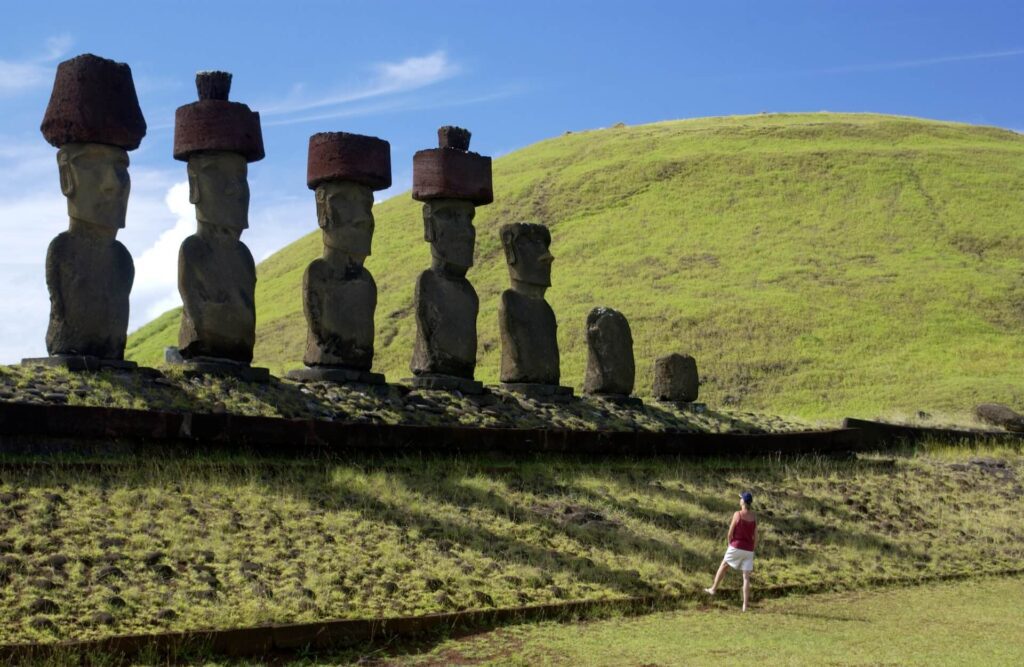
2. Easter Island
Easter Island, a remote island in the vast Pacific Ocean, is home to one of the Earth’s most iconic archaeological wonders — the moai statues. These monolithic figures, carved from solid rock, stand as silent sentinels along the island’s coastline. The mystery of Easter Island lies not just in the statues’ sheer size but also in the incredible feat of engineering required to create and transport them.
For centuries, the Rapa Nui people carved these statues from the volcanic rock of the island’s quarries, meticulously shaping them to represent their ancestors. These statues, some reaching heights of 30 feet and weighing several tons, were then moved to their designated positions along the coast, sometimes over extraordinary distances. The methods by which the Rapa Nui achieved this remain a subject of fascination and debate among archaeologists.
Easter Island, isolated from the rest of the world, offers a captivating narrative of a society that thrived in splendid isolation but ultimately faced devastating environmental challenges and societal changes. With their hauntingly stoic expressions, the moai statues stand as enduring symbols of human achievement and the great mysteries that await us in the Pacific Ocean.
If you’re as enchanted by the history of Easter Island as we are, consider booking a place on our Easter Island Tour, which includes attendance at the Tapati Festival.
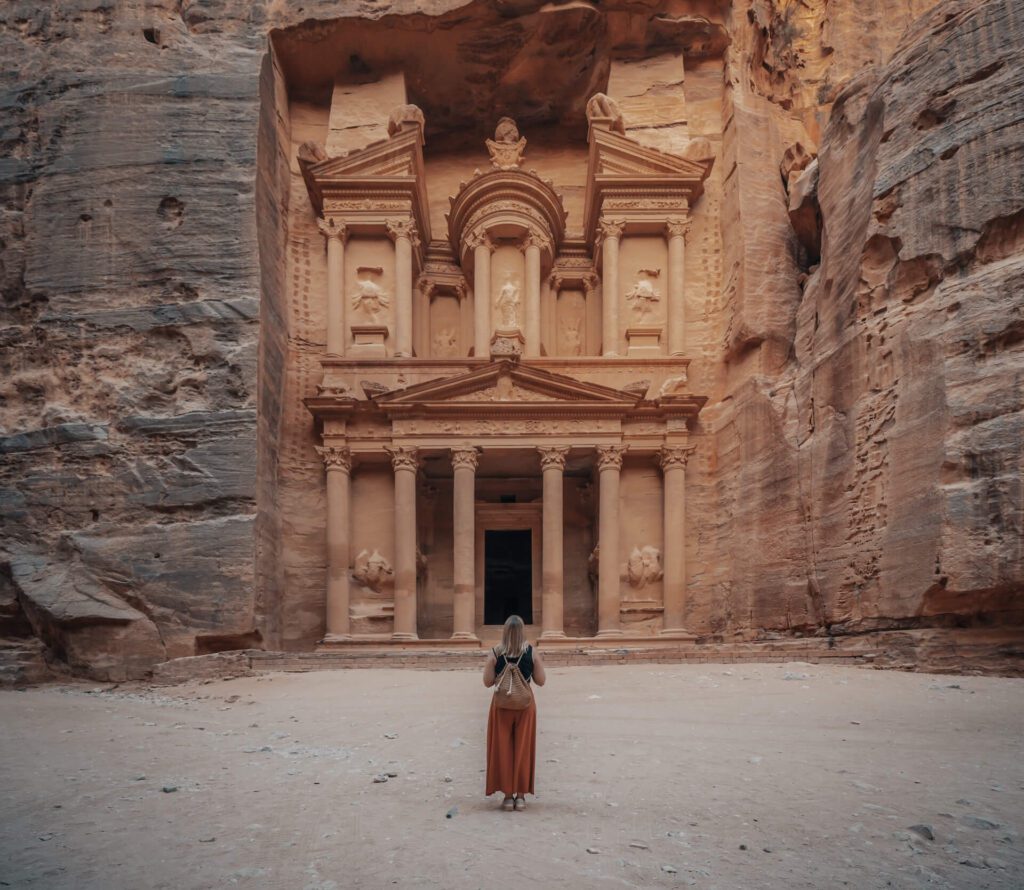
3. Petra
Hidden amidst the harsh desert terrain of Jordan lies Petra, an archaeological marvel and once a thriving city of the ancient Nabateans. What makes Petra truly remarkable is its fusion of natural beauty and mankind’s ingenuity when it comes to engineering. This city was carved into the rose-red cliffs, creating a landscape that seems plucked from the pages of a fantasy novel.
The city’s most iconic structure is the Treasury, an intricately adorned facade that once served as a tomb. As you wander through the narrow siq (canyon) and catch your first glimpse of the Treasury, you’ll be moved by the fantastic nature of what surrounds you. It’s a testament to the skill of the Nabatean craftsmen who sculpted these structures with such precision.
Petra’s history is shrouded in the mists of time, but its importance as a trading hub is well-documented. Caravans laden with spices, silks, and other valuable goods once traveled the intricate network of rock-cut tombs and temples that make up the city. Petra’s decline and eventual abandonment are still the subject of study and speculation, but its allure as an archaeological site understandably continues to draw visitors from around the world.
Take our Tour of Jordan and Petra to explore this magnificent site in the company of Professor Gary Rollefson.
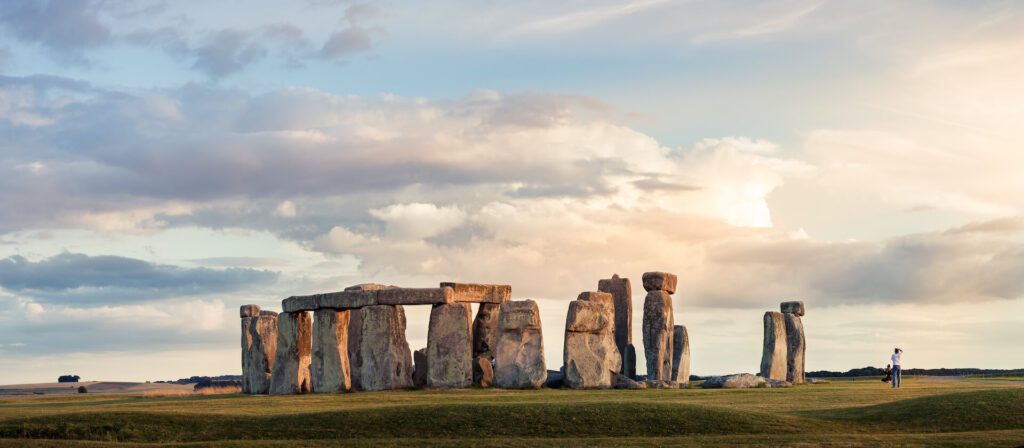
4. Stonehenge
In the rolling landscape of Wiltshire, England, stands Stonehenge — one of the world’s most iconic ancient sites. This prehistoric monument, composed of massive standing stones arranged in a circular pattern, has perplexed and inspired generations of archaeologists, historians, and travelers.
The purpose of Stonehenge remains a subject of conjecture, but its astronomical alignment suggests a profound connection to the celestial cycles. The monument is believed to be an ancient observatory, marking significant solar and lunar events with precision. With rudimentary tools and an unwavering commitment, the builders of Stonehenge transported these colossal stones from distant quarries and arranged them with astonishing accuracy.
Stonehenge’s enigmatic allure is heightened by its surroundings. The Salisbury Plain holds many other ancient earthworks and barrows, creating a landscape rich in archaeological treasures.
As you stand amidst the towering stones of Stonehenge, you can’t help but be transported back in time, pondering the motivations and beliefs of the people who labored to create this enduring monument to the heavens.
Our Archaeological Pub Crawl of England visits Stonehenge, along with five other UNESCO World Heritage Sites.
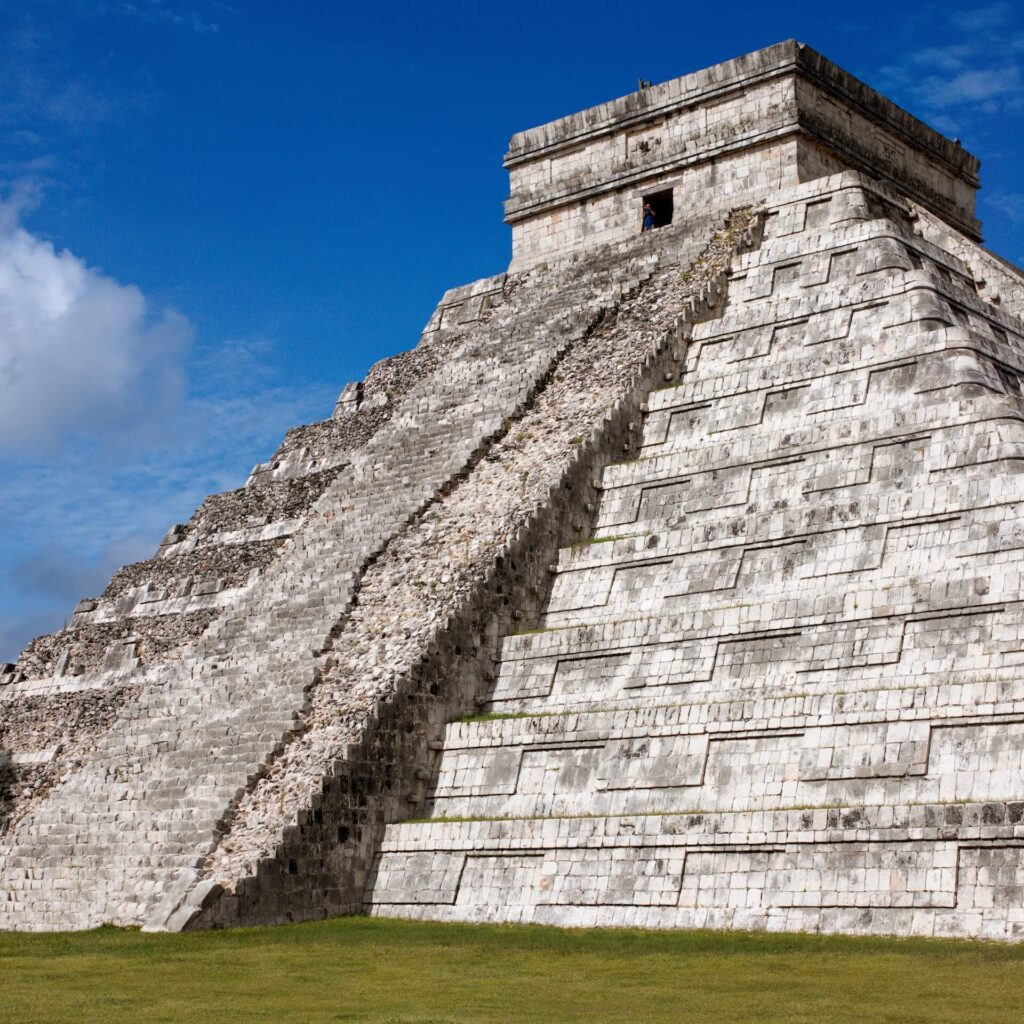
5. Chichén Itzá
Deep within the jungles of Mexico’s Yucatan Peninsula lies Chichén Itzá, a testament to the remarkable achievements of the ancient Maya civilization. What sets Chichén Itzá apart is its unique blend of architectural styles, reflecting the Maya’s cultural exchanges with other Mesoamerican groups.
The most iconic structure at Chichén Itzá is El Castillo, the Pyramid of Kukulcan. This step pyramid acts as a monumental celestial calendar, with 365 steps — one for each day of the solar year. During the spring and autumn equinoxes, the play of light and shadow on the pyramid creates the illusion of a serpent descending the steps, a tribute to the feathered serpent god, Kukulcan.
Chichén Itzá was a place of astronomical study and a thriving city with temples, residential areas, and even a ball court on which a ritualistic Mayan sport would have been played. Its history is one of cultural fusion and transformation, mirroring the complex dynamics of Mesoamerican civilization. As you explore the ruins of Chichén Itzá, you can’t help but be struck by the Maya’s intellectual and architectural prowess.
Take our Tour of Mexico’s Yucatan to see this site on an adventure of your own.

6. Angkor Wat
The Angkor Wat temple complex in Cambodia is a true marvel of ancient architecture and engineering. Built in the early 12th century by King Suryavarman II, Angkor Wat is the largest religious monument in the world and an enduring symbol of Khmer art and culture.
Its harmonious blend of Hindu and Buddhist influences sets Angkor Wat apart. Its central tower represents the mythical Mount Meru, home of the Hindu gods, while its intricate bas-reliefs depict scenes from Hindu epics like the Ramayana and Mahabharata. Over time, the temple complex transitioned to Buddhism, and today, it stands as a symbol of Cambodia’s enduring spiritual heritage.
As you wander through the sprawling complex, with its intricately carved galleries and serene reflecting pools, you can’t help but be transported back in time. Angkor Wat’s preservation and restoration efforts have made it possible for visitors to witness the grandeur of this ancient city, a place where devotion and artistic brilliance converged.
Read about our Archaeology of Cambodia and Laos Tour and begin planning your dream trip to Angkor Wat.
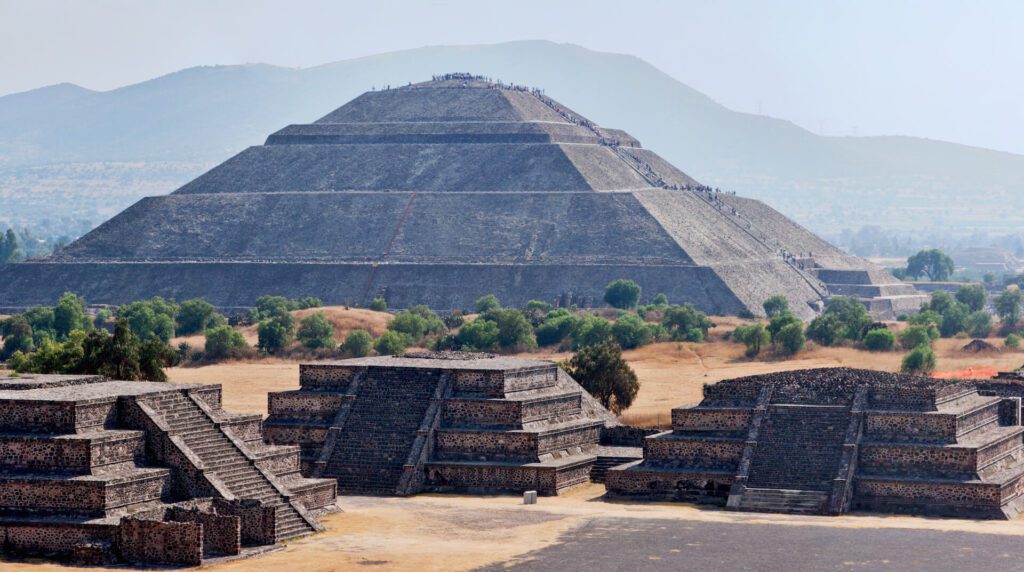
7. Teotihuacán
Just outside modern-day Mexico City lies the ancient city of Teotihuacán. This sprawling archaeological site, known for its monumental pyramids, was once a thriving metropolis and one of the largest cities in the ancient world.
The Pyramid of the Sun and the Pyramid of the Moon, at the heart of Teotihuacán, are awe-inspiring structures that speak to the city’s cultural and architectural significance. The Pyramid of the Sun, in particular, stands as one of the largest pyramids in the world. Its construction and alignment with celestial events underscore the advanced knowledge of the ancient inhabitants.
Teotihuacán’s history is still shrouded in mystery, as the civilization that built it left no written records. Yet, its legacy is etched in stone, from the intricately decorated murals to the grand Avenue of the Dead.
As you explore this ancient city, you can’t help but marvel at the achievements of the people who once called Teotihuacán home. Secure a place on Far Horizons’ Central Mexico Tour and visit Teotihuacán in the company of an expert in Mexico’s history.
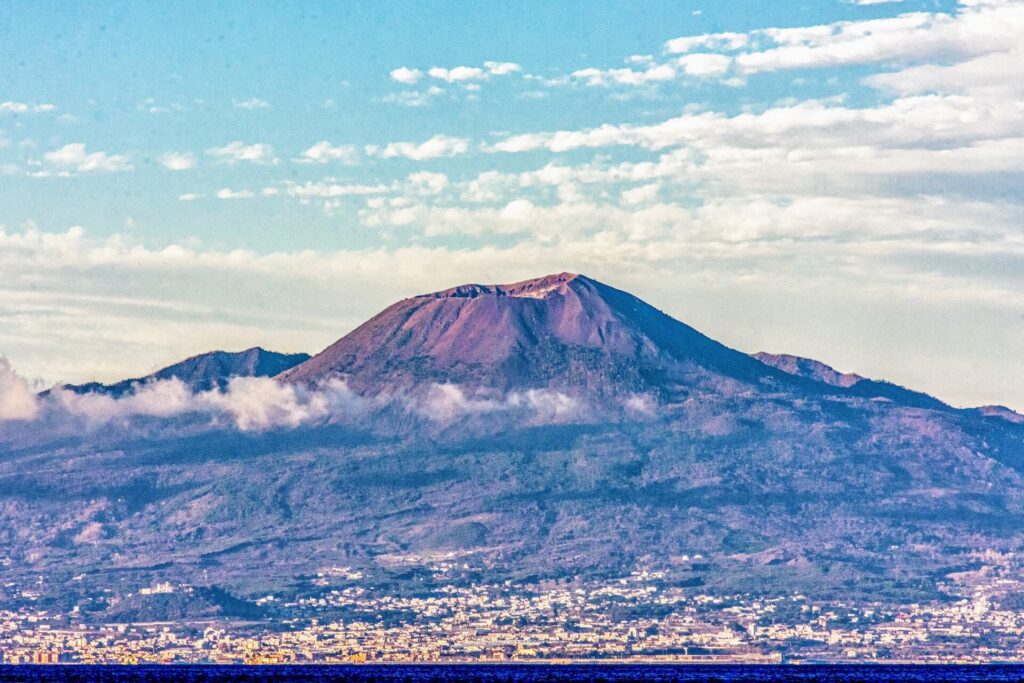
8. Pompeii
The ruins of Pompeii, nestled in the shadow of Mount Vesuvius in Italy, are a haunting reminder of the catastrophic power of nature. In 79 AD, this thriving Roman city was buried under layers of volcanic ash and pumice when Vesuvius erupted, preserving it in remarkable detail for nearly two millennia.
Pompeii offers an unparalleled glimpse into daily life in ancient Rome. The preserved streets, homes, and public buildings provide a snapshot of a sophisticated, vibrant society. You can walk along the cobbled streets, visit the well-preserved brothels, admire the colorful frescoes, and see the remnants of a city frozen in time.
As you explore the ruins of Pompeii, the tragic events of that fateful day come to life. The plaster casts of the victims, created by filling voids left by decomposed bodies, offer a poignant reminder of the human toll of the eruption. Pompeii is more than just an archaeological site; it’s a poignant reminder of human civilization’s impermanence and the devastating power of nature.
Pompeii is covered as part of our Rome and Southern Italy Archaeological Tour.
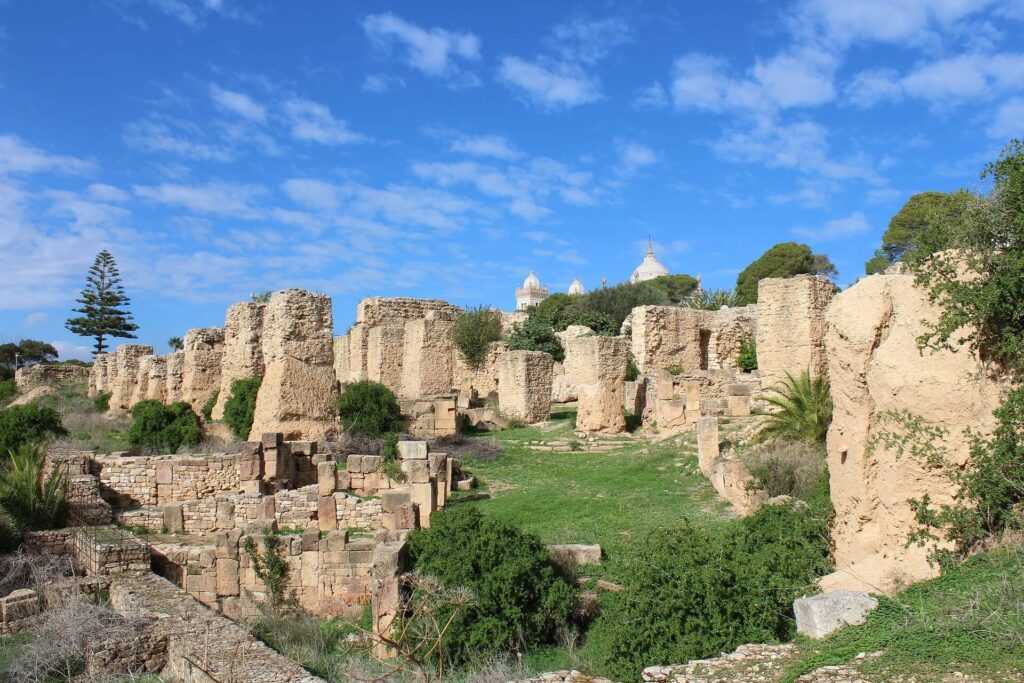
9. Carthage
On the shores of modern-day Tunisia, the ancient city of Carthage once stood as a formidable rival to the mighty Roman Republic. Carthage’s history is a tale of power struggles, trade dominance, and epic conflicts that would shape the course of Western history.
Founded by the Phoenicians in the 9th century BC, Carthage evolved into a powerful maritime empire with a sprawling network of colonies and a formidable navy. Its most famous conflict, the Punic Wars, pitted Carthage against Rome in a series of brutal struggles for supremacy. Hannibal Barca’s audacious trek across the Alps with his army and elephants is a testament to Carthage’s determination.
The ruins of Carthage offer glimpses into its complex history, from the grandeur of the Antonine Baths to the haunting remnants of the Tophet, a sacred burial ground. Carthage’s legacy extends far beyond its ancient walls, with its impact on trade, culture, and the trajectory of Western civilization still felt today.
See Carthage for yourself on our Wonders of Tunisia Tour.
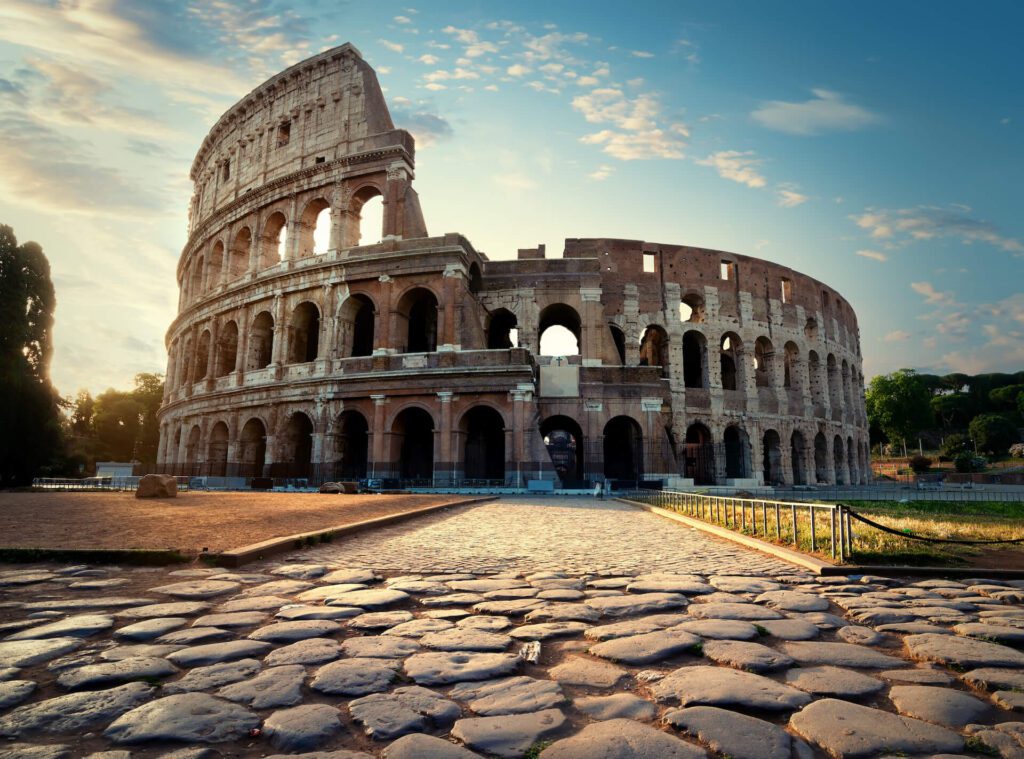
10. The Colosseum
In the heart of Rome stands the Colosseum, an enduring symbol of ancient engineering and entertainment. Also known as the Flavian Amphitheatre, this colossal structure once hosted grand spectacles that drew thousands of spectators.
Constructed in AD 70-80, the Colosseum could hold up to 80,000 spectators who gathered to witness gladiatorial contests, animal hunts, and other dramatic performances. The arena’s elaborate system of trapdoors, elevators, and pulleys added an element of surprise to the events, delighting the Roman crowds.
The Colosseum’s iconic elliptical design and grand arches are a testament to Roman architectural ingenuity. Although the structure has weathered earthquakes, fires, and the passage of centuries, it remains a striking example of ancient engineering. As you stand amidst the colossal ruins, you can’t help but envision the roar of the crowds and the drama that unfolded within these ancient walls.
Our Rome and Southern Italy Tour is a must for those passionate about Roman history.
Ancient History Tours of Europe and Beyond…
Each of our selected sites, from the Roman Colosseum to the Pyramids of Giza, offers a unique glimpse of our ancient past. These archaeological wonders stand as lasting reminders of human ingenuity, determination, and the ceaseless quest for understanding the world around us.
So, let us continue to cherish and protect these timeless wonders, for they are the keys to unlocking the story of how we came to be where we are today.
Before you leave, explore our full Calendar of Archaeological Tours. If you have any questions, please get in touch.



